The race for Maryland governor is heating up, election day is Tuesday, June 26. With a range of issues being presented climate change is a hot button topic which has sparked debates between candidates. WBALTV.com presents the 2018 voter’s guide on the issues in the race for Maryland governor.
The following are the candidates’ responses to addressing climate change in Maryland, in their own words.
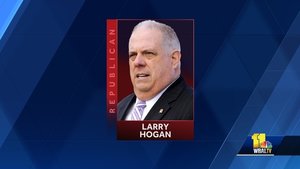
Gov. Larry Hogan (R)
Governor Hogan has made preserving and protecting the natural world around us a major priority of his administration.
Through advocacy and concrete action, the governor has consistently recognized the threat that climate change represents to Maryland’s future. In 2015, he signed legislation to strengthen and expand the Maryland Climate Change Commission, and the following legislative session, enacted the bipartisan Greenhouse Gas Reduction Act of 2016 to reduce greenhouse gases 40 percent by 2030 — giving Maryland some of the strongest greenhouse gas standards in the nation, even stronger than the Paris Climate Agreement.
When the federal administration withdrew from the Paris Climate Agreement, Governor Hogan stated his opposition and reaffirmed Maryland’s commitment to stringent clean air standards by joining the U.S. Climate Alliance with a group of bipartisan governors from across the country.
In addition, Maryland is a proud member of the multi-state Regional Greenhouse Gas Initiative (RGGI), a coalition of nine states working together to reduce carbon dioxide emissions. Through this important organization, the Hogan administration is constantly working to find common ground on the right mix of environmental and economic safeguards while encouraging other states to join this bipartisan group.
Under the governor’s leadership, Maryland continues to launch innovative initiatives that save energy and reduce emissions, such as $24 million for a new energy-water infrastructure program at wastewater treatment plants, and legislation passed in 2017 to provide tax credits and rebates for the purchase of cleaner cars and electric vehicle charging infrastructure.
The governor also supports the expansion of solar, wind, and other renewable energy sources while opposing drilling off of our shores. The Hogan administration is investing in green jobs through Maryland’s nationally recognized Employment Advancement Right Now (EARN) program and provided $7.5 million in funding to create the Maryland Energy Innovation Institute at the University of Maryland.
Time and time again, the governor has stood firm against practices that threaten to harm our environment, including supporting and signing into law a ban on hydraulic fracturing.
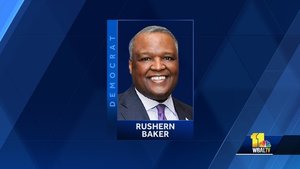
Rushern Baker (D)
We will work to reduce greenhouse gas (GHG) emissions by 80 percent, below 2008 levels by 2050 and ensure Maryland has 100 percent clean and renewable energy by 2035.
I will enact stronger renewable energy standards; protect existing net metering regulations; expand clean energy incentives; invest in offshore wind farms off the coast of Ocean City; and make permanent the Community Solar Pilot Program that helps provide moderate and low income households access to clean energy options. These small scale and distributed sources as well as large projects will cut Maryland’s carbon emissions by 19,000 tons annually and create over 9,700 jobs.
I will work with organizations such as the 100 Resilient Cities to identify and fund state-wide resiliency efforts involving the electric grid, water supply, transportation systems and other critical infrastructure.
We will leverage available philanthropic resources such as Bill Gates’ Breakthrough Energy and actor Mark Ruffalo’s The Solutions Project.
We will continue to support one of the nation’s most successful energy efficiency initiatives and work collaboratively with utilities to create “EmPOWER Maryland Plus” — a strategic effort to enhance existing energy efficiency measures and operationalize the Maryland Public Service Commission, Grid-of-the-Future initiative which is designed to re-imagine and modernize energy systems (e.g. vehicle-to-grid) while increasing economic growth in the state.
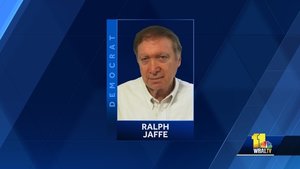
Ralph Jaffe (D)
One of the five principles in my platform is to tell the truth all of the time, not just some of the time. Therefore, I am not going to state any falsehoods to the voters. I do not consider myself to be an expert on climate change. Therefore, what I propose to do is to listen to my constituents — the real authorities — and determine their positions on the specific policies in question. I will listen to both sides — proponents and opponents. I am well aware of the complexity of most of the issues related to climate change. The dispute on expanding the use of natural gas and infrastructure serves as a good example. I would also go to the experts in the government and the private sectors for their viewpoints. The groups that I would stay away from are the paid, professional lobbyists for the side they represent. Based on this process and the data I obtain, I would take a formal position on the issue.
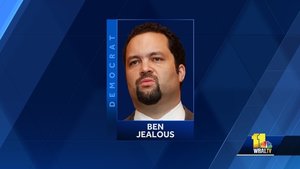
Ben Jealous (D)
My main priority will be to address climate change, with a goal of working to achieve the Paris Agreement’s goal of keeping the world from warming more than 1.5 degrees Celsius by doing our part here in Maryland. I will build on the surge of clean energy jobs in Maryland, and put our state on a path to 100 percent clean energy well before mid-century to create a healthy planet, more jobs and prosperity for the people of Maryland. I will also revive plans to create a functional and modern transportation system that serves our citizens and reduces our state’s carbon pollution and other pollutants that affect the health of our children and the members of our families and communities with respiratory problems.
I will work to make Baltimore, and other at-risk communities, more resilient to climate change. We urgently need to explore natural infrastructure solutions to make sure Baltimore’s citizens and Maryland’s coastal residents can survive being on the front line of increased natural disasters and sea level rise. I live on the tributaries of the Chesapeake. It’s become clear to me that we cannot rely on the Trump administration, EPA Chief Scott Pruitt, or a neutered EPA to fund the critical work of restoring the Chesapeake. I will also prioritize ways to address the most critical needs for that ecosystem. Finally, while the Trump administration has turned a blind eye to America’s broken infrastructure, I will make fixing Baltimore’s broken sewers, leaded service lines, and transportation infrastructure a priority.
The first protest I attended of my own volition was an anti-clear cutting protest, and this early commitment to our environment followed me my entire life. As a young journalist in Mississippi, I covered the poisoning of a community after an explosion of a nearby chemical plant. From there, I helped launch the Neighborhood Green Corps at Ralph Nader’s Public Interest Research Group. At the NAACP, the first program I launched was the Climate Justice Program. Under my leadership, the NAACP supported efforts at a cap-and-trade climate bill and when the fight against the Keystone pipeline in D.C. was launched, I went to speak directly with the protesters and was one of the first national figures to lend support (and persuaded civil rights legend Julian Bond to go to jail to support the fight) and a little over a year ago, I sat on the pavement next to Bill McKibben blocking the doors outside the Army Corps of Engineers building during the Dakota Access fight.
I have a clear vision when it comes to the environment: it intersects with the economy, civil rights, and public health and it will be a core priority for me when I’m governor.
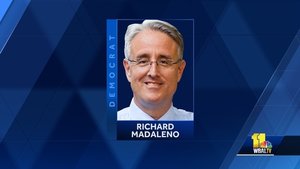
Rich Madaleno (D)
It is critical to address the causes and consequences of climate change immediately. Anyone who believes in science recognizes that a carbon-free energy future is essential for the planet’s survival. Rising global temperatures and sea level have significant consequences for Maryland, including loss of coastal land and changing weather patterns, that impact us all. I will take many important steps to build that carbon-free energy future, building upon my strong record of action to increase our state’s reliance on renewable energy, expand our renewable energy sector and support the transition to a green economy.
REDUCING GREENHOUSE GAS EMISSIONS. To combat the increasing health, environmental and economic repercussions of climate change, I co-sponsored legislation to ensure that meaningful greenhouse gas reduction targets are met in Maryland. I co-sponsored the new state law which requires a 40 percent reduction by 2030 in greenhouse gas emissions in Maryland from 2006 levels, building on my co-sponsorship of the 2009 law requiring the 25 percent reduction in greenhouse gas emissions from 2006 levels by 2020. I co-sponsored the law that establishes the Commission on Climate Change to recommend ways to mitigate the effects of, prepare for and adapt to climate change.
INCREASING USE OF RENEWABLE ENERGY. I support continued expansion of the use of renewable energy in Maryland and support the proposed Clean Renewable Energy and Equity Act which would lead to 100 percent clean renewable energy by 2035 by requiring the direct purchase of increasing amounts of electricity from clean sources, through long-term contracts for offshore wind and up-front rebates for rapid solar development in Maryland. This would enable a more rapid expansion of renewable energy and the transition to a green, sustainable economy. Alternatively, I would support an increase in the current renewable energy portfolio standard so that 50 percent of the state’s energy in Maryland will come from renewable sources by 2030. I co-sponsored the law, approved over Governor Hogan’s veto, which increases the renewable energy portfolio standard to 25 percent by 2020, increases solar sources in that portfolio and requires that the Maryland Department of Labor study workforce training needed to support jobs in the clean energy industry. I also co-sponsored the law to include offshore wind in the renewable energy portfolio.
FOSTERING INNOVATIVE TECHNOLOGIES. Along with the support of increased use of renewable energy, I support the development of innovative, new, environmentally-friendly technologies to meet our energy needs. I sponsored a bill to provide a renewable energy state income tax credit to spur the development of renewable energy businesses, such as solar, wind and geothermal. I co-sponsored the law establishing a Community Solar Energy Generating System program and laws increasing tax credits for electric vehicles and for electric vehicle recharging equipment.
PROMOTING PUBLIC TRANSPORTATION. To significantly reduce the use of carbon in the transportation sector, I have been and as governor will be a strong advocate for public transportation. In the 2018 legislative session, I am fighting for the Metro Funding Act to establish a dedicated fund to which Maryland would contribute $150 million annually.
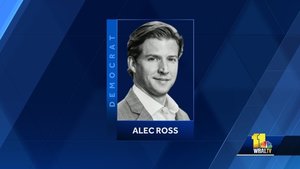
Alec Ross (D)
We need a climate policy that works for the environment and the economy. The conventional wisdom in Washington is that these two goals are in conflict. That’s just wrong. In Maryland, we have the vision and creativity to do well by doing good — never settling for less. My climate and clean energy plan protects Maryland’s natural resources and positions our state as a leader in the green economy.
First, we need to continue on the path towards using cleaner energy in Maryland. This means increasing the Renewable Portfolio Standards to 50 percent renewable energy by 2030 and 100 percent by 2040. Second, we need to do more to continue the progress we’ve made in cleaning up the Bay. That means standing up to Scott Pruitt’s efforts to defund the bay cleanup and support the Chesapeake Clean Water Blueprint and implementation of Maryland’s Watershed Implementation Plans and related pollution reduction targets.
We also need to realize that combating climate change can be an economic boon to Maryland. We need to establish a green bank to provide low-cost financing for small businesses and individuals in Maryland to take advantage of new technologies that would allow them to save money and negate the harmful impacts on the environment.
Finally, we need to join the US Climate Alliance and commit Maryland to reaching at least a 26 percent reduction in greenhouse gas emissions below 2005 levels by 2025. Maryland’s precious natural resources depend upon our commitment to all of these priorities, and as governor, I would be their champion.
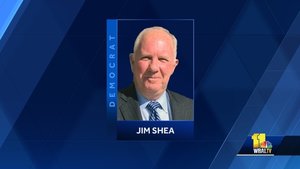 .
.
Jim Shea (D)
Maryland, more than almost any other state, has a fundamental interest in protecting the environment for future generations. With our way of life and our economy so strictly tied to natural wonders like the Chesapeake Bay and the mountains in Western Maryland, we must make investments to ensure that these treasures are protected from the effects of climate change.
Pollution in our air and water — often coming from outside of Maryland — threatens the health of our citizens for generations to come. It is critical that the federal government has strong protections in place and works with other countries to reduce pollution and emissions. Unfortunately, protecting the environment is not a priority for President Trump. The president made the incomprehensible decision to pull out of the Paris Climate Accord, and the EPA’s Clean Power plan is facing repeal. President Trump also has proposed in his budgets to zero-out funding for the Chesapeake Bay restoration. He has decided to allow offshore drilling along Maryland’s coastlines, he is continually working to repeal environmental protections, and he is leading a war on climate science. We need a governor who will fill the void and protect Maryland from Trump’s attacks on our environment.
Creating an environmentally friendly state presents significant economic opportunity. Expanding investments in Maryland’s renewable energy industry and upgrading the state’s infrastructure will create good-paying jobs across the state and position Maryland to compete economically for decades and centuries to come.
Shifting Maryland’s energy consumption to renewables is both a method for economic growth and environmental preservation. By 2030, at least 50 percent of our energy consumption should come from renewable sources. Our ultimate goal is for that number to be 100 percent. In order to reach these goals, however, Maryland must support the construction of new renewable energy production, including offshore wind projects and solar panels. We must look for creative ways to expand our storage capacity and integrate it with the grid. As part of a larger focus on vocational and apprenticeship programs, the state must augment career training opportunities for those who will move into the renewable energy sector. And, the state must provide incentives to businesses who are on the cutting edge of renewable energy production to bring the opportunities that come with renewable energy production, including more jobs and better wages, to the people of Maryland.
Maryland must work to protect our natural spaces, like the Chesapeake Bay, the Atlantic Ocean, and the mountains of Western Maryland so that future generations can enjoy these wonders and Maryland can continue to benefit economically from tourism revenue. We must balance development, land preservation, and agricultural usage. Expanding access to open spaces and forest preservation should be priorities. We must protect our clean waterways, especially the Chesapeake Bay, to support our watermen and the fishing industry.
Preserving Maryland’s environment is both a social and an economic imperative. As governor, I will strike the proper balance of protecting our environment and driving long-term economic growth so future generations can enjoy Maryland’s natural wonders.
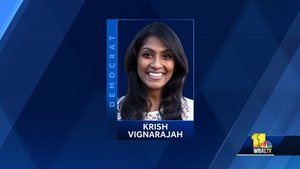
Krish Vignarajah (D)
Climate change is by far the most important issue facing Maryland. We cannot wait another moment to cut our emissions and begin bringing about the clean-energy future that we so desperately need. To do so, Maryland must join with New Jersey to establish a clear goal of 100 percent clean energy by 2035. As governor, I believe that supporting wind and solar energy are keys to the future of Maryland’s energy economy. Offshore wind in particular represents the greatest opportunity for the massive de-carbonization of Maryland’s energy system, and my administration will prioritize investments in wind and other promising forms renewable energy technology to spur a transition toward 100 percent renewables.
Our state’s solar industry already boasts over 165 companies and employs over 5,000 Marylanders — and I am committed to at least another 500MW of solar in the next eight years. Similarly, the wind industry is also beginning to thrive in Maryland; a typical 250 MW wind farm creates about 1,079 jobs over the lifetime of the project. I will support wind farm projects such as the Skipjack/Deepwater and U.S. Wind project off Ocean City — and plan to source 2 GW of additional wind energy over the next eight years. We need bold, progressive leadership to drive a rapid transition towards 100 percent renewable energy, and a clean energy industry can be the foundation for a more inclusive economy.
We must also take steps to protect communities from Baltimore to the Eastern Shore that are already experiencing the negative impacts of climate change. As a low-lying coastal state, climate change threatens to decimate our coastal communities from extreme weather and sea level rise, flood out communities adjacent to riparian corridors, undo much of the progress towards restoring the Bay as greater levels of precipitation bring torrents of nutrients and sediment into its tributaries, fundamentally alter agricultural growing seasons, exacerbate public health threats facing environmental justice communities, and introduce invasive species and disease that could devastate native wildlife and plant populations.
As governor, I would take steps to address sea level rise and other impacts already devastating Maryland communities. With sea levels in the Chesapeake Bay anticipated to increase by two feet or more by 2050, mitigation strategies are necessary. Therefore, as governor, I would instruct investigation and investment in strategies to mitigate changing sea levels, including the production of high-resolution topographical data for coastal counties, the revision of outdated flood zone maps, studies on the environmental impact of sediment spraying, dredging, and other erosion mitigation strategies on the ecology of Maryland’s coastal marshes. Finally, I would initiate and support efforts to relocate and resettle residents with homes and livelihoods threatened by sea level rise.

